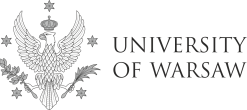Seminar details
Date: 25.11.2025
Fraser Gillan (NCBJ,PL)
Activity in Jupiter-family Comets, Asteroids and Interstellar Objects: Insights from Time-domain Photometry and Deep Imaging
Abstract:
Jupiter-family comets (JFCs) exhibit a wide range of activity levels and mass-loss over their orbits. Using over 34,000 images, we analysed 116 active JFCs with the Asteroid Terrestrial-impact Last Alert System (ATLAS), focusing on those reaching perihelion from 2020–2023. The dust production rates were measured via the Afρ parameter, showing most JFCs reach a peak in activity post-perihelion, typically within 2.5 au of the Sun, likely driven by water-ice sublimation. We measured the rate of change of dust activity as a function of heliocentric distance for 56 JFCs and found that, on average, the rate of change of activity post-perihelion was shallower than pre-perihelion. We also identified five JFC nuclei with no visible coma, estimating upper limits for their radii, consistent with previous studies. Additionally, eleven outbursts were detected, with magnitude increases ranging from -0.2 to -2.8, matching typical JFC behaviour. In a complementary study, we explored the evolution of short-period comets on their transition to the inner solar system. We observed 16 asteroids on comet-like orbits to search for low-level activity using the Isaac Newton Telescope on La Palma. Surface brightness profiles indicated low-level activity in three asteroids, suggesting reclassification as weakly sublimating cometary nuclei. Our findings imply that up to 33% of objects in the 3.16–4.56 au range may exhibit low-level activity. Ongoing work at the NCBJ has involved time-domain observations of the interstellar comet 3I/ATLAS on its journey through the inner solar system, testing capabilities of the Black Hole Target and Observation Manager (BHTOM) in the process. In future, we aim to expand the capabilities of BHTOM to support solar system targets requests and provide photometric time-domain measurements for these objects.



